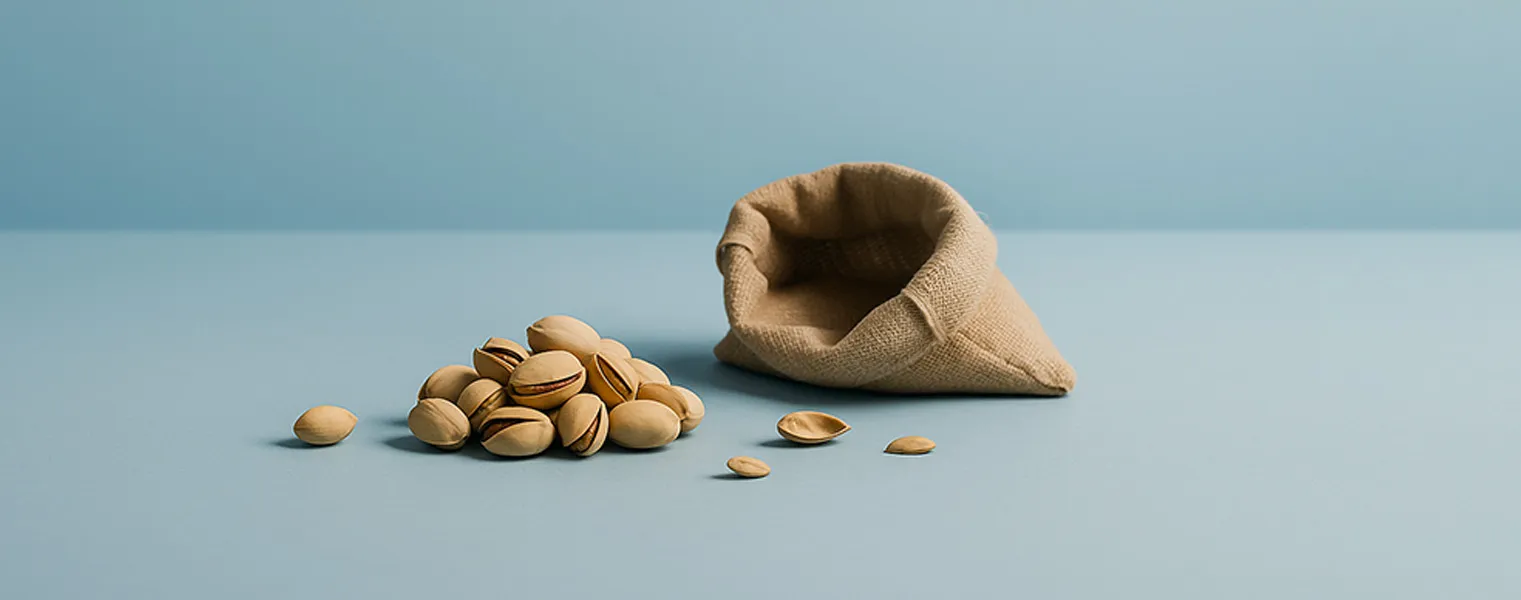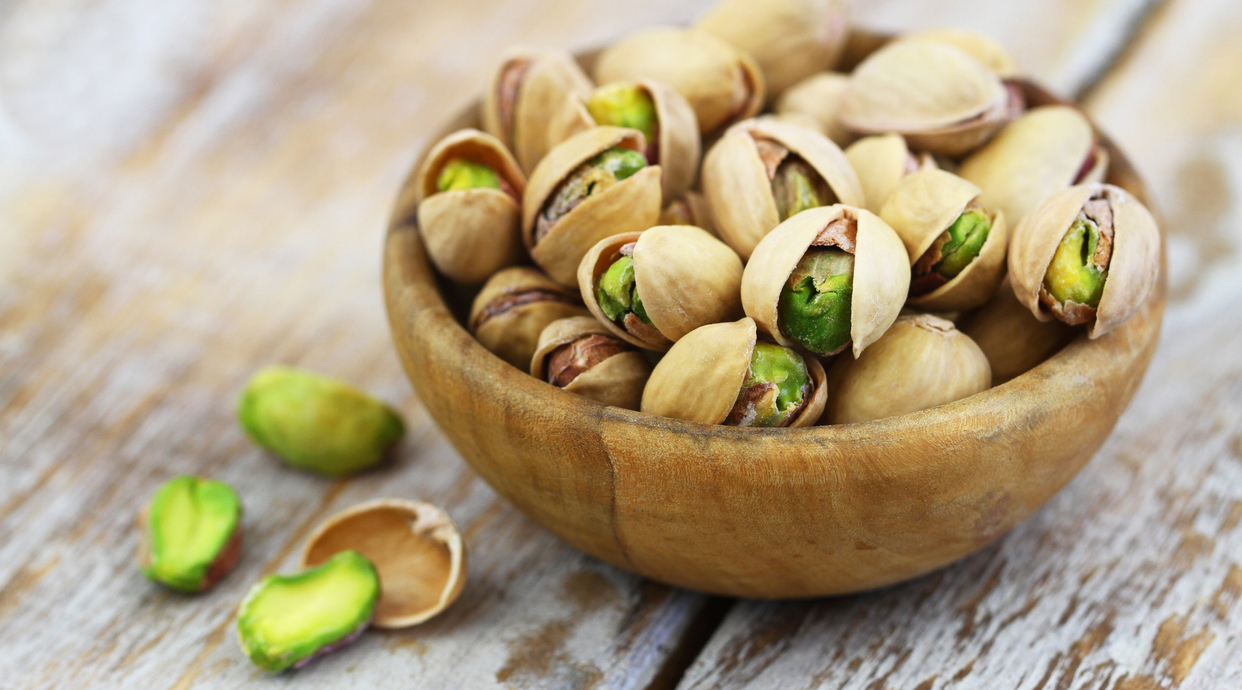US Pistachios Export Down 25%, Australia Aims High: Tripling Pistachio Production to Conquer Global Market
Pistachios have long been regarded as a premium tree nut, valued for their rich taste, nutritional benefits, and cultural significance. From Iran’s centuries-old orchards to rapidly expanding acreage in the United States and Australia, the global pistachio market is experiencing both challenges and opportunities. Below is a complete overview of the latest developments in production, trade, pricing, and outlook for the 2025 season and beyond.
1. Latest Market Updates & News
US Pistachio Exports Slump by 25%
According to a January 2025 report, U.S. pistachio exports are down about 25% year-on-year, yet industry analysts point out that overall shipments remain robust despite the decline. The December shipment report from the Administrative Committee for Pistachios (ACP) indicates that domestic sales within the U.S. have reached a multi-year low—falling to 18.837 million pounds in December 2024, down 16% compared to December 2023.
Even with this drop, American pistachios are still highly competitive. A key factor is that the U.S. accounts for over 60% of global pistachio production, driven by California’s massive orchards in the San Joaquin Valley. However, oversupply concerns and competition from other growing regions have created price and export challenges.

Iran’s Growing Export Momentum
In contrast to the U.S. slump, Iran’s pistachio exports have picked up, aided by attractive pricing and the longstanding reputation of Iranian pistachios for high quality and unique taste profiles. Iran—historically the world leader in pistachio cultivation—continues to command a significant share of global exports, typically over 30% of total production worldwide in past seasons. Even under water scarcity and sanctions, Iran’s pistachio industry remains resilient, thanks to centuries of farming experience in the country’s arid and semi-arid regions.

2. Global Production Status
United States
- Leading Global Producer: The U.S., primarily California, holds the top spot, accounting for over 60% of world production. Orchards in the San Joaquin Valley benefit from hot, dry conditions and tolerate soil salinity.
- Long-Term Expansion: Pistachio trees can remain productive for decades—sometimes close to a century—once they mature (typically after 7–10 years). Significant acreage planted in the last decade is starting to bear more nuts, contributing to high output.
- Domestic Demand vs. Export Markets: While domestic sales dipped in December 2024, export markets remain crucial. China is the primary overseas buyer, but producers are diversifying into other markets, such as Latin America.
Iran
- Historic “Green Gold”: Pistachios are deeply rooted in Iranian culture, with a history spanning more than three millennia.
- Major Growing Regions: Kerman Province, especially Rafsanjan City, is renowned as a global pistachio hub. Iran’s arid climate is well-suited for pistachio cultivation, and water-efficient irrigation methods are increasingly employed to manage resource constraints.
- Global Reputation for Quality: Iranian pistachios—varieties like Fandoghi, Kaleghouchi, Ahmad Aghaei, and Akbari—are prized for taste and large kernels.
Australia
- Record Production: Australia’s pistachio harvest reached 4,500 tons in 2024—a milestone for the sector. Current estimates project that output may double in the next 2–3 years and potentially double again within 4–5 years.
- Expanding Acreage: The country’s pistachio footprint has grown from 700 hectares a decade ago to 3,000 hectares now. Most orchards line the Murray River corridor in southern New South Wales, northwestern Victoria, and parts of South Australia.
- Focus on Overseas Markets: With domestic demand stable, Australian growers are increasingly exploring exports to high-potential regions like China and India.

Other Regions
- Turkey: A historically significant producer, though overshadowed by U.S. and Iran in volume. Turkey’s pistachios are primarily consumed domestically.
- Spain & Emerging European Orchards: Some expansion in Europe, as Mediterranean climates can be suitable for pistachio trees.
- Potential in Peru: Industry leaders in Peru (noted by the former Minister of Production) have urged entrepreneurs to explore pistachio farming as an avenue for diversified agro-exports, citing investment costs of USD 5,000–10,000 per hectare with potential annual returns of no less than USD 10,000.
- Brazil: Does not produce pistachios commercially yet, but import volumes from the U.S. have soared by 80% in 2024. Discussions are underway about establishing Brazil’s first commercial pistachio orchard in Ceará.
3. Top Exporters and Importers
Leading Exporters
- United States: Dominant global supplier, with California pistachios leading the charge.
- Iran: Longstanding exporter with recognized quality and taste profiles.
- Turkey: Smaller volume but a key regional player.
- Australia: Rapid expansion, with more product likely earmarked for export in the coming years.

Primary Importers
- China: The largest buyer worldwide, where pistachios are popular during the Lunar New Year.
- European Union: Steadily growing demand for both in-shell and shelled pistachios.
- India: High potential due to rising health-conscious consumer base seeking nutrient-dense snacks.
- Brazil: Imports have skyrocketed, fueled by marketing campaigns from the U.S.
- Middle East (beyond Iran): Countries like the UAE and Saudi Arabia also import pistachios, especially for re-export and value-added processing.

4. Product Quality, Harvest Timing, and Key Characteristics
Product Quality
- Iranian Pistachios: Renowned for vibrant color, distinctive flavor, and larger kernel types such as Akbari and Ahmad Aghaei.
- U.S. Pistachios: Highly uniform in size and shape, with consistent grading standards. Industry-led R&D has also focused on disease resistance and shelf-life improvements.
- Australian Pistachios: Generally high-quality, benefiting from rigorous pest management and modern irrigation techniques.
Harvest Timing
- United States (California): Pistachios are typically harvested from late August through September.
- Iran: Harvest runs from late summer into early autumn, varying by region and climate.
- Australia: As a Southern Hemisphere producer, Australia’s harvest occurs from late February to early March, offering an offseason supply to the Northern Hemisphere.

Key Characteristics
- Long Tree Lifespan: Pistachio trees can produce commercially for decades, making them a long-term investment.
- Drought and Salinity Tolerance: Pistachios thrive in arid and semi-arid regions with well-drained soil, making them suitable for places like California, Iran, and parts of Australia.
- Nutritious and Versatile: High in protein, fiber, and antioxidants, pistachios are marketed as a healthful snack and an ingredient in confectionery and bakery products.
5. Prices Now and Future Trends
Current Pricing Environment
- U.S. Market: Domestic demand remains significant, but December’s dip in shipments suggests some price stabilization or downward pressure. Exports may face growing competition as volumes from Australia and Iran ramp up.
- Iranian Exports: Favorable prices and high global demand for premium nuts have benefited Iranian exporters. Certain varieties fetch premium prices in niche markets.
- Australia’s Position: Likely to see stable to upward price trends as new buyers emerge, particularly in Asia. However, oversupply in coming years might exert downward pressure if market expansions do not keep pace.
Future Trends
- Oversupply Concerns: Given the long-term orchard expansions in California, Australia, and elsewhere, the global pistachio market may encounter surplus production if demand growth lags.
- Emerging Markets: Countries like China, India, and Brazil offer massive consumer bases. Targeted marketing and promotional campaigns have already boosted imports in these regions.
- Focus on Health Benefits: Ongoing research highlighting pistachios’ nutrient profile (especially antioxidants and healthy fats) may sustain or increase consumer interest worldwide.
- Climate and Water Constraints: Regions with scarce water resources (such as Iran and parts of California) must manage drought, salinity, and irrigation costs, potentially influencing production volumes and cost structures.
- Value-Added Products: More brands are launching flavored pistachios and using pistachio kernels in ready-to-eat meals, desserts, ice creams, and baked goods. This diversification may support higher price points.

6. Market Analysis & Signals
- US Export Dip vs. Iran’s Growth: Even as U.S. shipments dipped by 25%, Iranian exports have surged thanks to competitive pricing. If the U.S. continues facing lower domestic consumption (as evidenced by December’s multi-year shipment low), producers may push more aggressively into emerging markets like Southeast Asia and Latin America.
- Australia’s Rapid Expansion: With current production at 4,500 tons and projections for doubling twice over the next several years, Australia’s surplus will need new buyers. The industry’s focus on China and India is strategic, given these markets’ growing appetite for nuts and plant-based protein.
- Brazil’s Rising Demand: U.S. marketing campaigns have been highly successful in Brazil, with imports jumping 80% in 2024 alone. This may encourage other exporters, including Iran and Australia, to intensify promotional efforts.
- China’s Evolving Appetite: Known as the largest single importer of pistachios, China remains crucial. Increasing health awareness and holiday traditions fuel continuing strong demand. Any changes in Chinese consumer preferences or trade policies will quickly reverberate across the global pistachio market.
- Investments in Emerging Regions: Interest in pistachio cultivation is growing in Peru (with new large-scale irrigation projects) and possibly in northeastern Brazil. If these areas can produce commercially, they might add new global supply down the line.
7. Additional & Complementary Updates
In reviewing all the data and countries mentioned, here are further details and insights that round out the global pistachio picture:
- Peru’s Irrigation Projects: Former Peruvian Minister of Production, Alfonso Velásquez Tuesta, highlights the potential for pecan, chestnut, and especially pistachio cultivation, with a per-hectare investment ranging from USD 5,000–10,000 and possible annual returns of at least USD 10,000 per hectare. He points to upcoming large irrigation developments like Chavimochic III, Majes Siguas, and Chinecas as prime opportunities for diversifying Peru’s agro-export portfolio.
- China’s Demand for Other Nuts: While pistachios remain a top-selling nut in China, pecans and chestnuts (both mentioned alongside pistachios by Velásquez Tuesta) also see growing demand. These trends encourage countries like Peru to explore additional orchard crops.
- Brazil’s Christmas Pistachio Craze: During the 2024 holiday season, Brazilian supermarkets and bakeries displayed record pistachio-themed products, from panettone to ice cream. U.S. promotional campaigns, including partnerships with chefs and influencers, have helped drive this consumer uptick.
- Water Scarcity and Sanctions in Iran: Despite facing restrictions and environmental challenges, Iranian farmers have adopted innovative drip-irrigation systems and pest-management strategies to maintain high yields. Iran’s centuries-long history with pistachios and well-established global clientele bolster its export resilience.
- California’s Groundwater Legislation: The sustainability of the U.S. industry could be tested by new regulations on groundwater usage. Additional orchard plantings may be limited, eventually balancing out the surge in supply.
- California vs. Almond Price Trends: Pistachios have, in recent years, commanded a higher profit margin than almonds and some other nuts. Part of the U.S. shift to pistachios stems from low almond prices and the pistachio tree’s greater drought tolerance.
These complementary insights underscore the pistachio market’s dynamic, evolving nature. Whether it’s new orchard plantings in Australia, marketing campaigns in Latin America, or the resilience of Iran’s centuries-old industry, pistachios appear set for continued global prominence.

Final Thoughts
The global pistachio market in 2025 presents a multilayered landscape marked by:
- Strong expansions in the U.S., Australia, and other regions poised to produce an oversupply if demand growth slows.
- Robust interest from developing consumer bases in China, India, Brazil, and beyond—nations that could absorb much of the anticipated supply surge.
- Regional challenges related to water availability, trade policies, and currency fluctuations.
- Marketing campaigns that highlight pistachios’ nutritional benefits and culinary versatility, fueling steady consumer uptake.
Going forward, the pistachio sector will hinge on balancing production expansions with smart marketing and innovation. Stakeholders—growers, exporters, and retailers—remain optimistic, trusting in pistachios’ broad appeal and proven track record in both long-established and emerging markets worldwide.
Frequently Asked Questions
FAQ 1: Why Did U.S. Pistachio Exports Drop by 25%?
U.S. pistachio exports declined due to a mix of rising global competition, fluctuating domestic demand, and abundant supply. While the U.S. remains a top producer, exporters are facing tighter margins and stronger competition from Iran, Australia, and other emerging suppliers.
FAQ 2: How Are Iranian Pistachios Performing Amid Global Competition?
Despite challenges like water scarcity and sanctions, Iranian pistachios continue to be highly sought after for their quality and distinct flavor. Their exports have seen an uptick thanks to competitive pricing and a strong global reputation.
FAQ 3: What Makes Australia an Emerging Power in Pistachio Production?
Australia’s pistachio acreage has surged from 700 to 3,000 hectares in a decade. Favorable climate conditions along the Murray River and robust investment have propelled production to a record 4,500 tons. Projections suggest Australian output could double twice over the next several years, with a focus on overseas markets like China and India.
FAQ 4: Why Is Brazil Increasing Its Pistachio Imports by 80%?
Promotional campaigns led by U.S. producers, combined with a growing consumer interest in healthier snacks, have driven Brazil to import more pistachios. Retailers now stock diverse pistachio products—from ice cream and bakery items to festive treats—boosting nationwide demand.
FAQ 5: What Are the Key Factors Driving Global Pistachio Demand?
Pistachios are rich in protein, fiber, and antioxidants, appealing to health-conscious consumers. Their versatility in both sweet and savory recipes, combined with effective marketing, sustains global interest and raises imports in countries like China, India, and Brazil.
FAQ 6: Which Countries Dominate Pistachio Exports and Imports?
- Top Exporters: The United States and Iran lead worldwide, followed by Turkey and Australia.
- Key Importers: China, the European Union, India, Brazil, and the Middle East (beyond Iran) absorb the bulk of pistachio shipments globally.
FAQ 7: What Is the Typical Harvest Season for Pistachios?
- Northern Hemisphere: The United States and Iran generally harvest between late summer and early fall (August–October).
- Southern Hemisphere: Australia’s harvest takes place from late February to early March, offering an off-season supply to global markets.
FAQ 8: How Much Investment Is Required for Pistachio Cultivation in Emerging Regions?
Experts in Peru estimate an investment of USD 5,000 to 10,000 per hectare for pistachio orchards. Once established, yields can begin around the fourth year, with potential annual returns of no less than USD 10,000 per hectare.
FAQ 9: Do Environmental Factors Affect Pistachio Production?
Yes. Pistachios thrive in hot, dry climates and can tolerate salinity, but they require efficient water management. California faces groundwater limitations, and regions like Iran experience water scarcity, both of which can influence future production volumes and costs.
FAQ 10: What Are the Future Trends in the Global Pistachio Market?
Increasing supply in the U.S., Australia, and other regions may lead to short-term oversupply unless demand in China, India, and other emerging markets keeps pace. Ongoing promotional efforts focusing on pistachios’ health benefits are expected to support steady or rising global demand.



